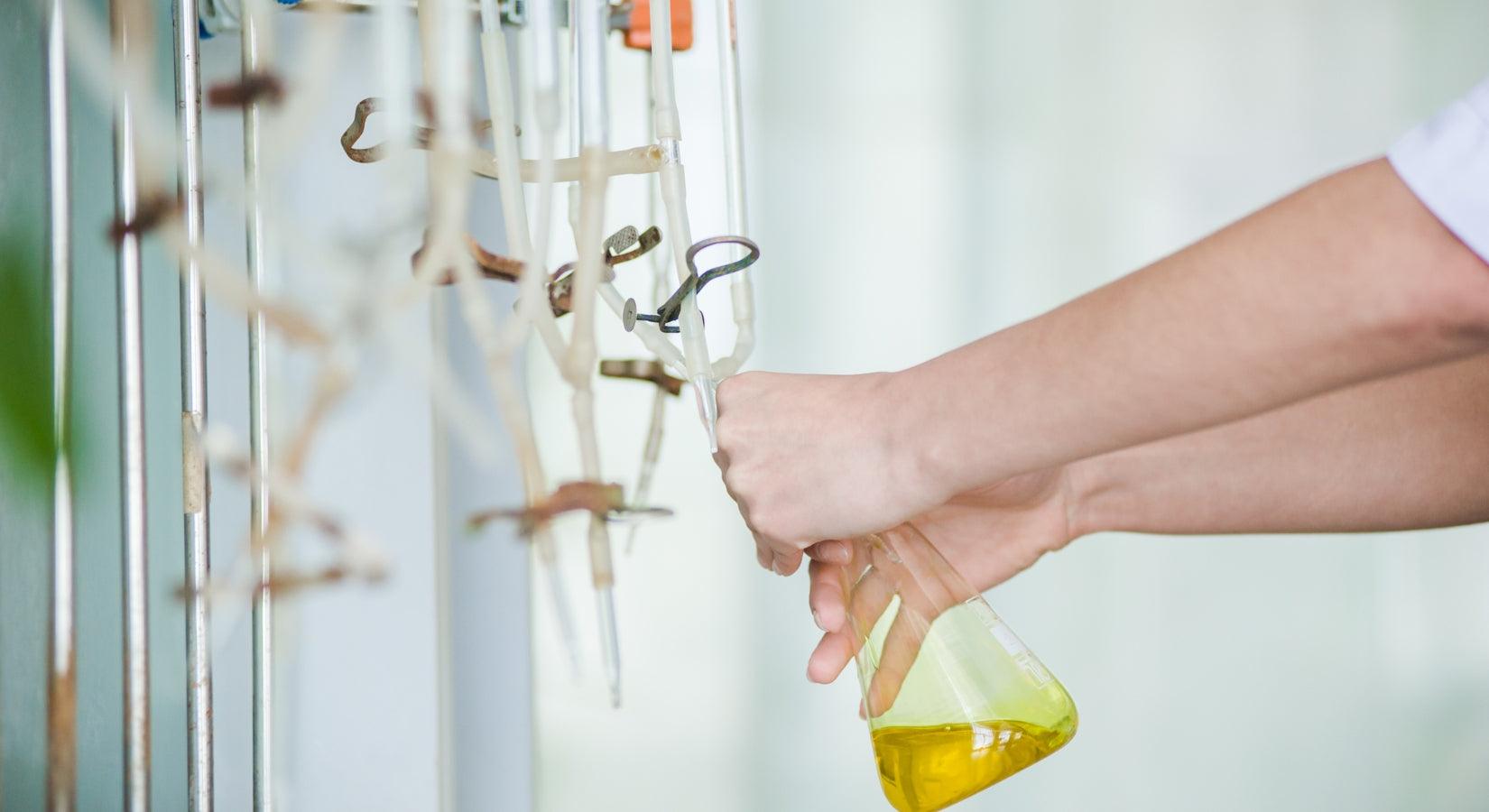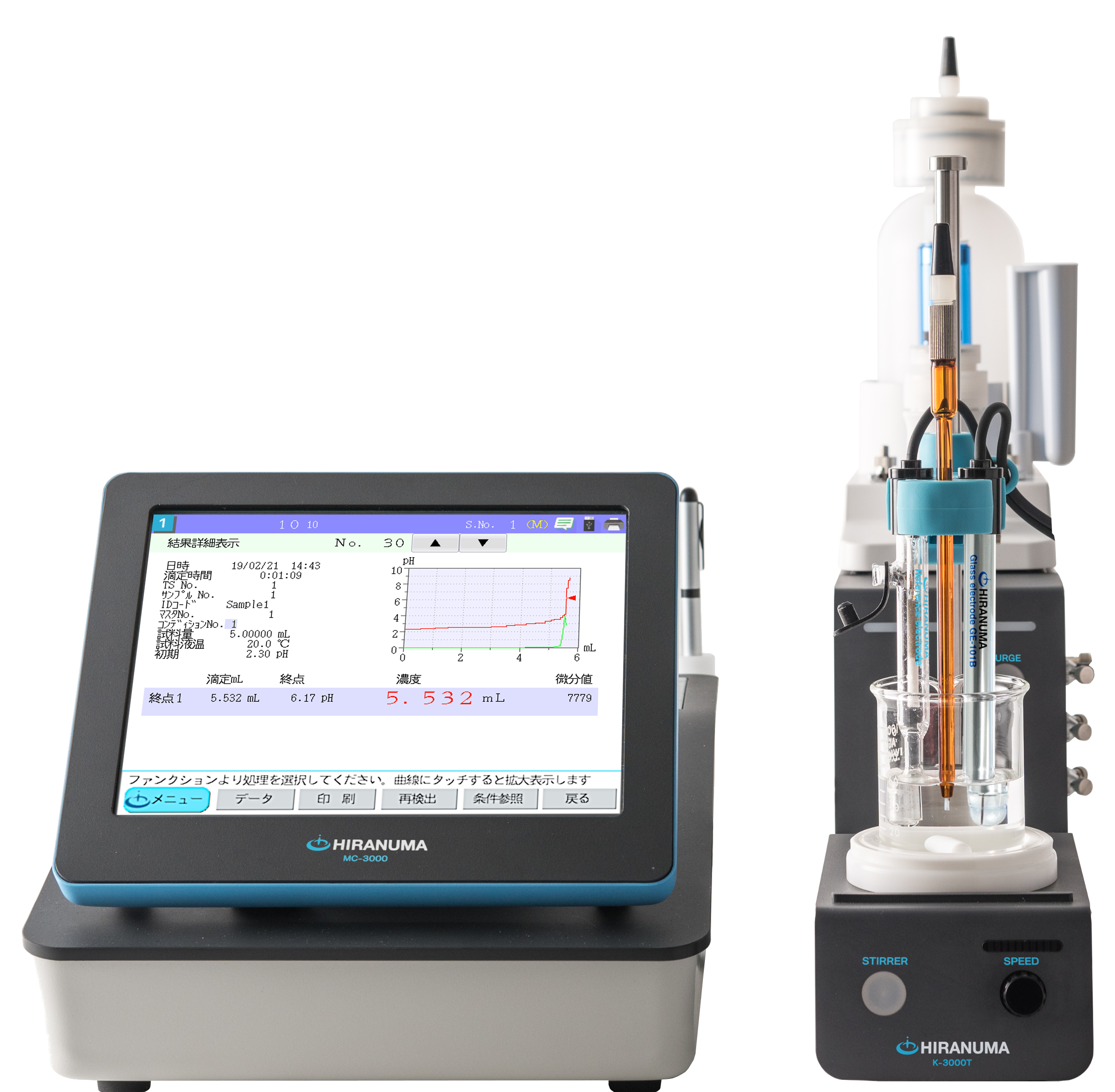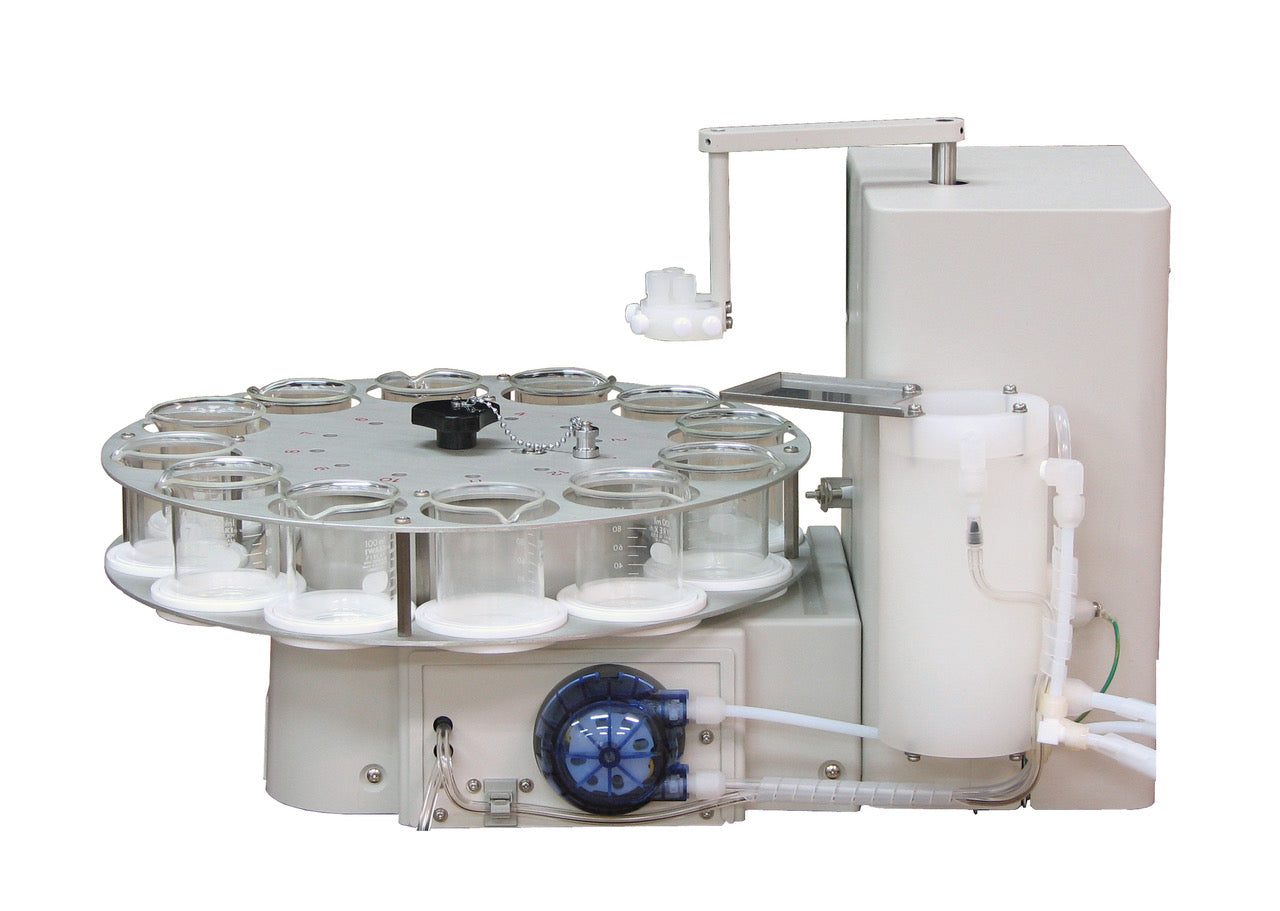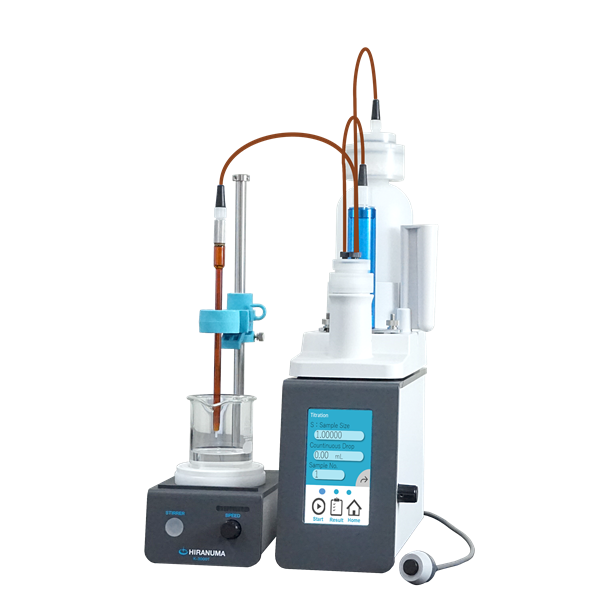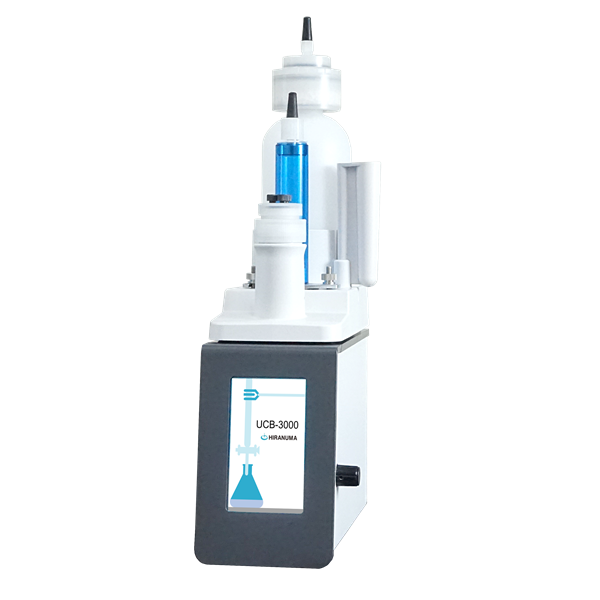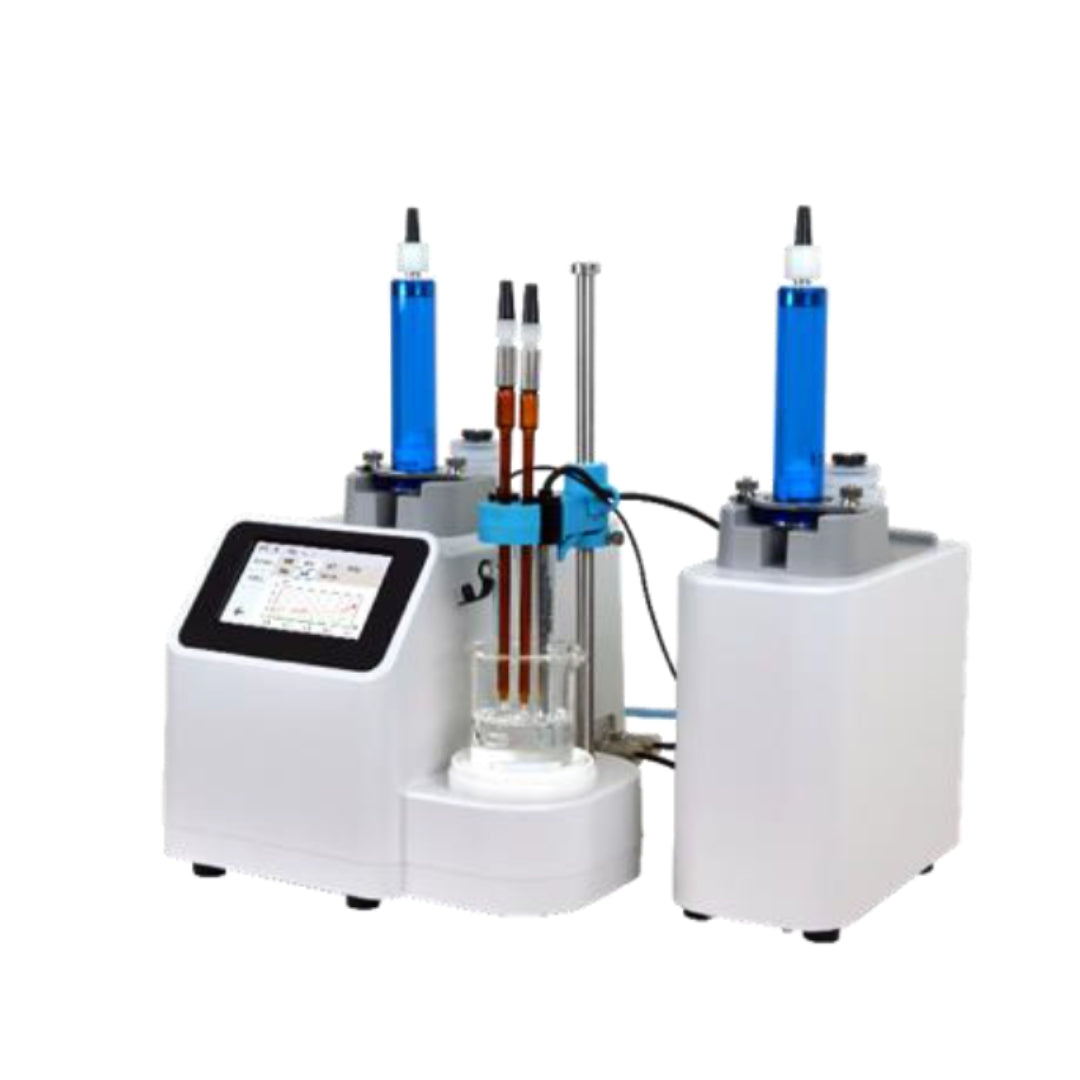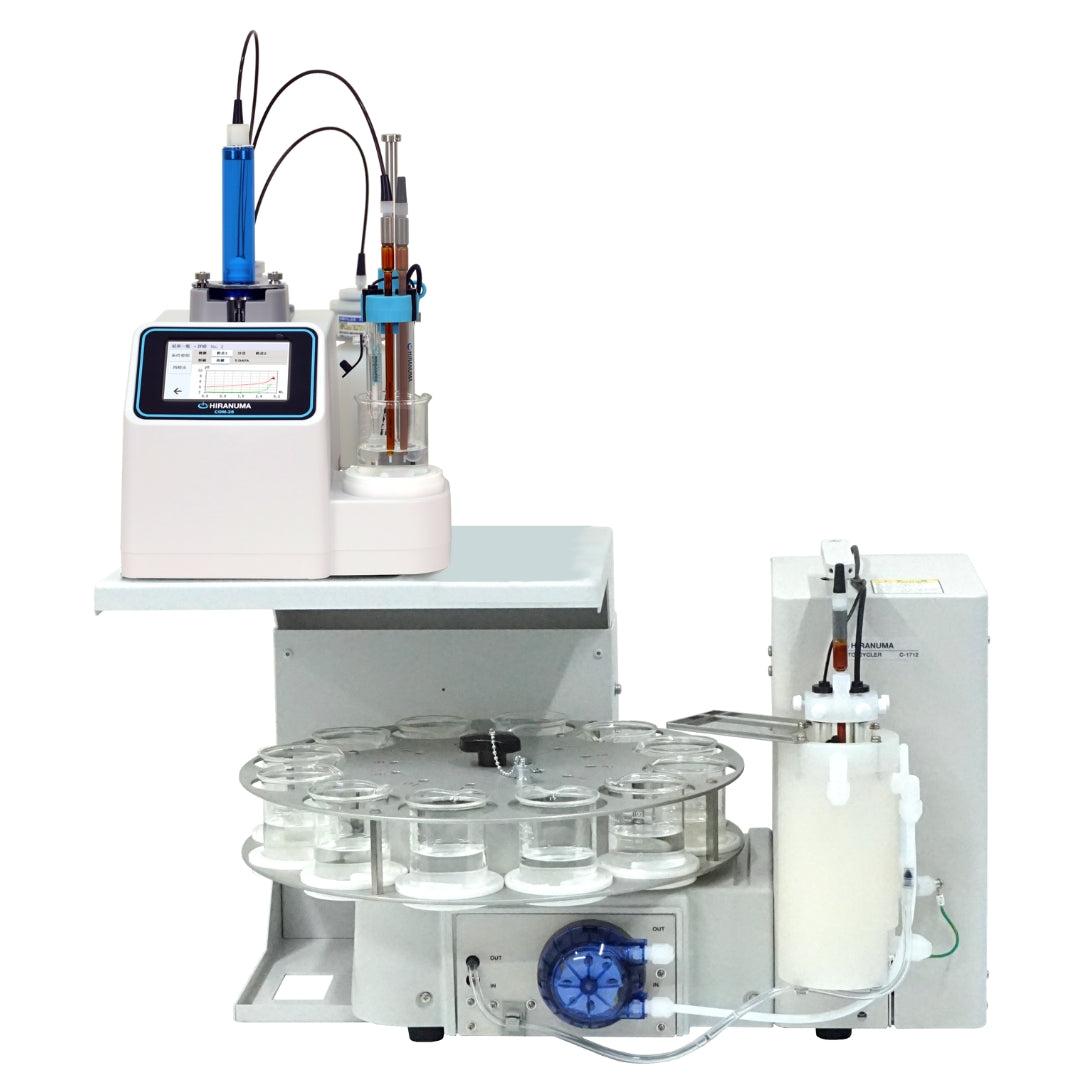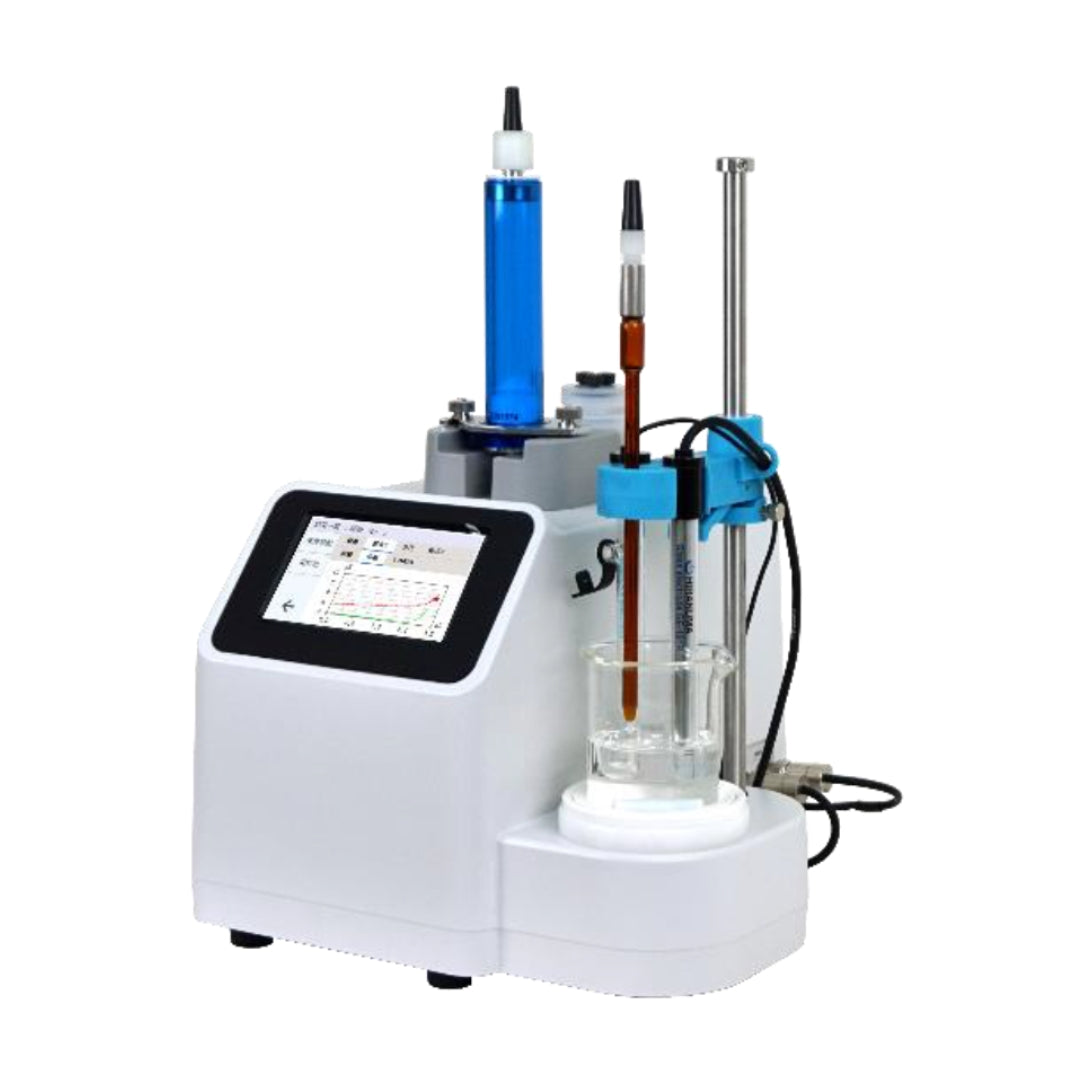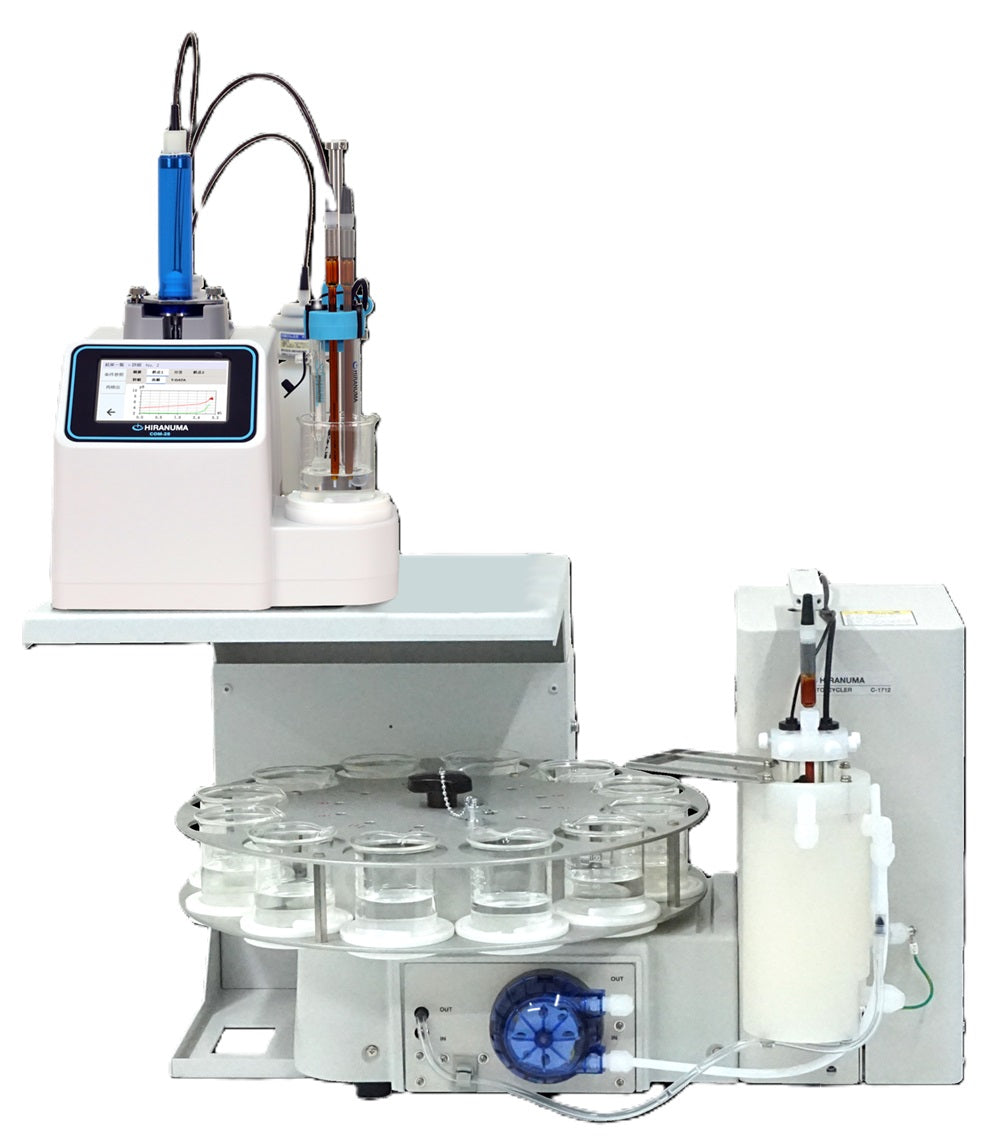| HIRANUMA APPLICATION DATA | Karl Fischer Titrator | Data No. | KF3 | Jun.6. 2017 |
| Water contents | Aromatic Hydrocarbon |
1. Abstract
Water content of Aromatic hydrocarbons are determined by Karl Fischer coulometric titrator. In coulometric titration, iodine of Karl Fischer reagent is generated by electrolysis and generated iodine quantitatively reacts with water. Reaction formula is described below.
H₂O + I₂ + SO₂ + 3RN + CH₃OH → 2RN・HI + RN・HSO₄CH₃
2RN・HI → I₂ + 2RN + 2H⁺ + 2e⁻
Aromatic hydrocarbons do not interfere the Karl Fischer reaction and direct injection method could apply. Anode solution is selected from General-use or Oil in accordance with sample solubility. General-use anode solution contains methanol as solvent. When the sample has low solubility in methanol, the use of anode solution for oil is appropriate. When fritless cell is used, cathode solution is not necessary.
2. Apparatus and Reagents
| (1) | Apparatus | ||
| Titrator | : | HIRANUMA Karl Fischer Coulometric titrator AQ-series or MOICO-A19 | |
| Electrolytic cell | : | Standard Cell Fritless Cell |
|
| (2) | Reagents | ||
| Anode solution | : | Hydranal coulomat AG (for general use, nonhalogenated) | |
| Cathode solution | : | Hydranal coulomat CG |
3. Procedure
| (1) | Fill 100 mL of anode solution and one ampoule of cathode solution into the electrolytic cell as shown in Fig.3.1. |
| (2) | Start blanking to attain stable background. |
| (3) | Wash the syringe with sample. |
| (4) | Draw the sample into syringe and then weigh the syringe. |
| (5) | Inject sample from rubber septum of electrolytic cell as shown in Fig.3.2. |
| (6) | Start titration. Measurement parameter is shown in Table 4.1. |
| (7) | Weigh the syringe again and then set the difference of weight to sample size. |

Fig.3.1. Preparation of the reagents.

Fig.3.2. Injection of sample.
4. Parameters and results
Table 4.1. Parameters
| Condition File | ||
| Cal Mode | 0:Sample weight(net) | |
| X-(H₂O-BLANK)/SIZE | ||
| Interval Time | 20 | sec |
| Current | SLOW | |
| S-Timer | 0 | min |
| Blank Value | 0 | ug |
| Unit Mode | AUTO | |
| Auto Interval | 0 | g |
| Minimum Count | 5 | ug |
| Back Ground | ON | |
| Sample Size Input | Every Time | |
| Cell Type | Standard/Fritless |
Table 4.2. Results of water content measurement in aromatic hydrocarbons
| Sample | Apparatus | Cell | Reagent | Sample Size (g) |
Water (μg) |
Water Content |
| Toluene | AQ | Standard | AG | 1.7520 | 94.3 | 53.8 ppm |
| CG | 1.7483 | 93.3 | 53.4 | |||
| 1.7348 | 92.7 | 53.4 | ||||
| Fritless | AG | 1.7549 | 91.4 | 52.1 ppm | ||
| 1.7398 | 92.1 | 52.9 | ||||
| 1.7356 | 91.9 | 53.0 | ||||
| Xylene | AQ | Standard | AG | 1.77164 | 110.5 | 62.4 ppm |
| CG | 1.62378 | 94.3 | 58.1 | |||
| 1.65876 | 99.9 | 60.2 | ||||
| Fritless | AG | 1.62232 | 93.2 | 57.4 ppm | ||
| 1.51125 | 88.0 | 58.2 | ||||
| 1.77412 | 104.5 | 58.9 |
5. Note
| (1) | Use dried syringe and syringe vial in Fig.5.1, for preventive of contamination by atmospheric water |
| (2) | Put appropriate anode solution in use according to the solubility of the sample. For example, Hydranal Coulomat AG-H and Oil are suitable for oils. Note : these reagents does not correspond to Fritless cell. |

Fig.5.1. Draw the sample from syringe vial.

